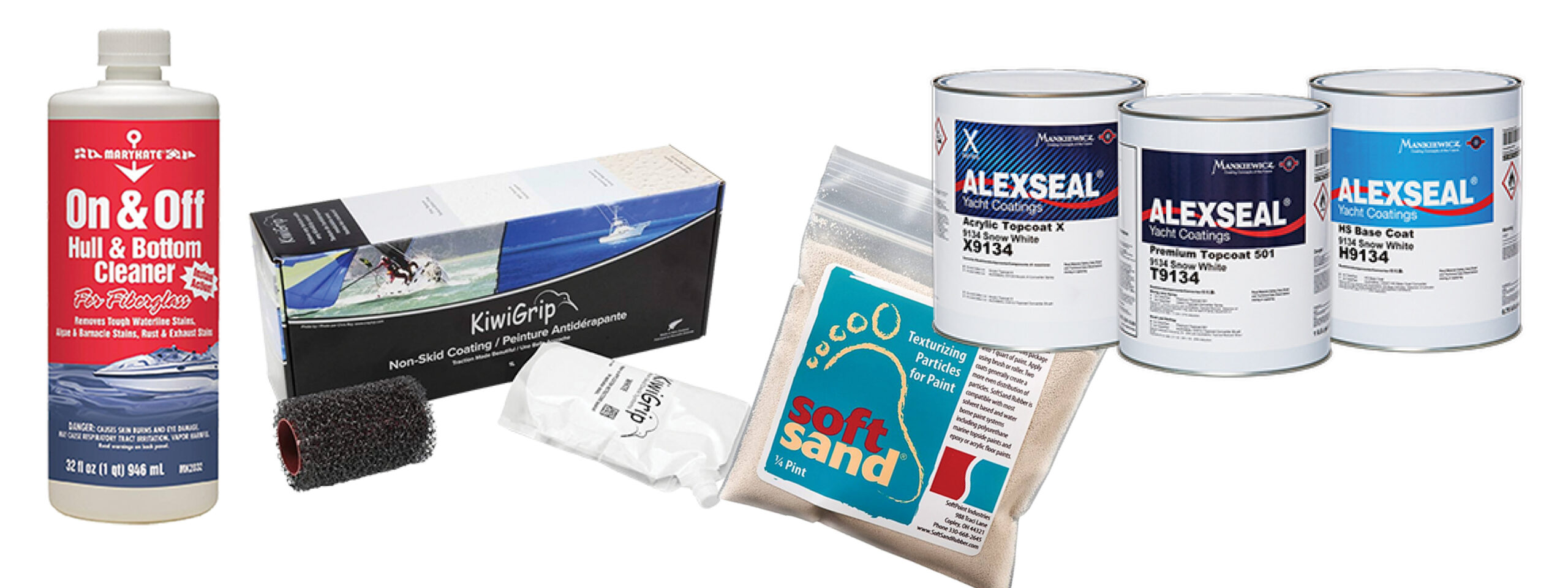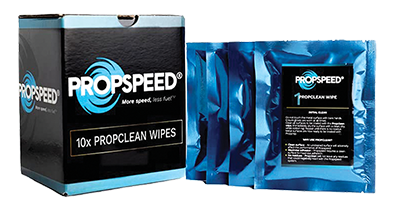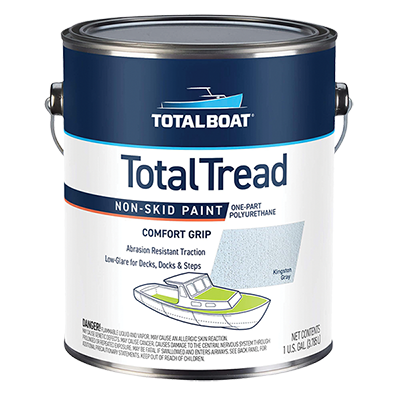
Eight must-dos and tips for fall decommissioning.
By the time you hold this magazine in your hands, your boat will either be out of the water for the season or facing its fall haul-out date. Summer is in the rearview mirror once again, and that means decommissioning projects must begin.
Some of these projects are must-dos — necessary to ensure your boat is sufficiently prepared for a long, cold Great Lakes winter. Others, however, allow you to enjoy a little tinkering as you refresh your boat for next year.
1. Deep clean, inside and out
The best time to clean your boat’s hull is immediately. As soon as you haul out, grab your CRC/Marykate On & Off Hull & Bottom Cleaner and a high-pressure hose, and target waterline stains, rust and gas exhaust stains, and any stubborn algal growth or barnacles.
“You want to wash that all off before it dries and hardens over the winter,” advises Defender Marine’s Skip Haskins, who has been a boater for more than 50 years.
As you move to the decks, cockpit and interior spaces, scrub down all surfaces with marine-safe products, such as those from Star brite or Z Cleaner. Pay particular attention to all the little nooks and crannies where dirt and mildew can accumulate.
This also provides a good opportunity to check the boat’s through-hulls. Open the valves so they can drain, and give them a good cleaning. Last but not least, clean and dry out the bilge, removing oil, debris and any lingering water. Check the bilge pump to make sure it’s still operating correctly, and clean its filter.
2. Add extra shine
A good-quality marine wax will protect the boat from UV damage and improve its appearance. If you’d like to add a little extra shine, Haskins recommends a premium yacht coating called Alexseal for the deck and hull.
“It’s a three-part paint from Germany,” he says. “I tried it this past spring with my boat. You just roll it on, bubbles come out, an additive dissipates them, and you’re left with a beautiful, shiny surface like a mirror. It’s amazing.”
3. Winterize everything
This is a biggie. Failing to winterize your boat correctly will lead to nasty surprises when spring commissioning rolls around.
“Here in the north, winterizing is understood and accepted,” Haskins says. “But if you spend time farther south in the winter, you might assume things won’t freeze. They will.”
First, pump out your holding tanks. Drain the water from your freshwater tanks and sanitize them. Along the way, check all your boat’s plumbing for leaks and other types of damage so you can replace hoses or fittings if necessary.
Then it’s antifreeze time. Winterize your bilge pumps, toilets, sinks, shower drains, baitwells and holding tanks. The antifreeze must completely displace the water.
You’ll also need to winterize your generator and engine. As far as the engine is concerned, there are two methods of winterizing a raw-water-cooled engine or the raw-water side of a freshwater-cooled engine. According to BoatUS: Drain the system and leave it dry, or fill it with antifreeze. Don’t forget to change the water pump impeller.
4. Maintain the propulsion system
Since you’re already winterizing your engine, you can take care of routine maintenance as well. Check your oil, fuel filters and spark plugs, and change them if necessary.
In addition, check and top off your coolant and hydraulic fluid, and add fuel stabilizer to your fuel tanks. That stabilizer can help prevent the fuel from degrading during a lengthy winter storage period.
Don’t forget about cleaning your propeller for improved performance and fuel efficiency — and reduced strain on your engine. Every prop needs to be removed, inspected for damage or debris, cleaned, and then reattached (after regreasing the shaft).
You can use Propspeed’s Propclean, a cleaner/ degreaser for propellers, shafts, struts and rudders. The company also makes a foul release system to use afterward.
Check and replace sacrificial anodes. They protect against electrolysis of the propeller shaft and other metal fittings, so you don’t want to overlook them.
“If the vessel has more than one anode, all must be the same,” Haskins advises. “Either all zinc or all aluminum.”
5. Update safety gear
Fall is a great time to go through all of your safety gear and do a full inventory. Make a note of outdated, damaged or missing gear that needs to be replaced, and set a reminder in your calendar to purchase them in the spring.
“Life jackets, flares and fire extinguishers all have expiration dates, so this is a date-sensitive task,” Haskins advises. “If you buy them now, you’re wasting several months of their life span.”
One safety-related task you can do now is inspect all of your boat’s lines for wear and tear. If they are old and fraying, replace them with new, durable lines for the next boating season.
6. Add nonskid decking
Another step you can take for increased safety is to apply a nonskid surface to high-traffic deck areas. Good DIY options include non-skid marine deck paints like TotalTread and paint additives such as AwlGrip Griptex and SoftSand.
“There also is the KiwiGrip Non-Skid Deck System, which is water-based and creates texture without sand, and Pettit Tuff Coat Rubberized Non-Skid Coating, which uses recycled rubber,” Haskins says. “Interlux has some great options, as well.”
7. Upgrade lighting
New energy-efficient LED lighting will save money and time while enhancing your onboard experience. Running, navigation and interior lights can all be replaced with LEDs.
“More people are using them for the economy of it,” Haskins says. “They’re expensive at first, but they’re better. They’ll last 15 years versus a year and a half.”
You might also consider installing additional lighting in dim areas for better visibility and a warmer, more welcoming atmosphere.
8. Refresh fabrics
Finally, you might wish to replace any worn-out cushions and upholstery with fresh, contemporary options. If not, remove the existing ones from the boat, wash or steam-clean them, and store them somewhere dry and climate-controlled during winter months.
“Take all the fabric off, because it draws mildew,” Haskins advises.
As you check off your priority decommissioning tasks and wish-list items, remember that all the extra time, effort and care will pay off come springtime. It will shorten your commissioning to-do list and lead to a smoother, more hassle-free start to the 2025 boating season.
Until then, your boat is ready to be tucked away for its well-deserved winter’s nap.
Founded in 1938, Waterford, Connecticut-based Defender Marine is the largest independent marine supply company in the United States. Visit defender.com for more information.







